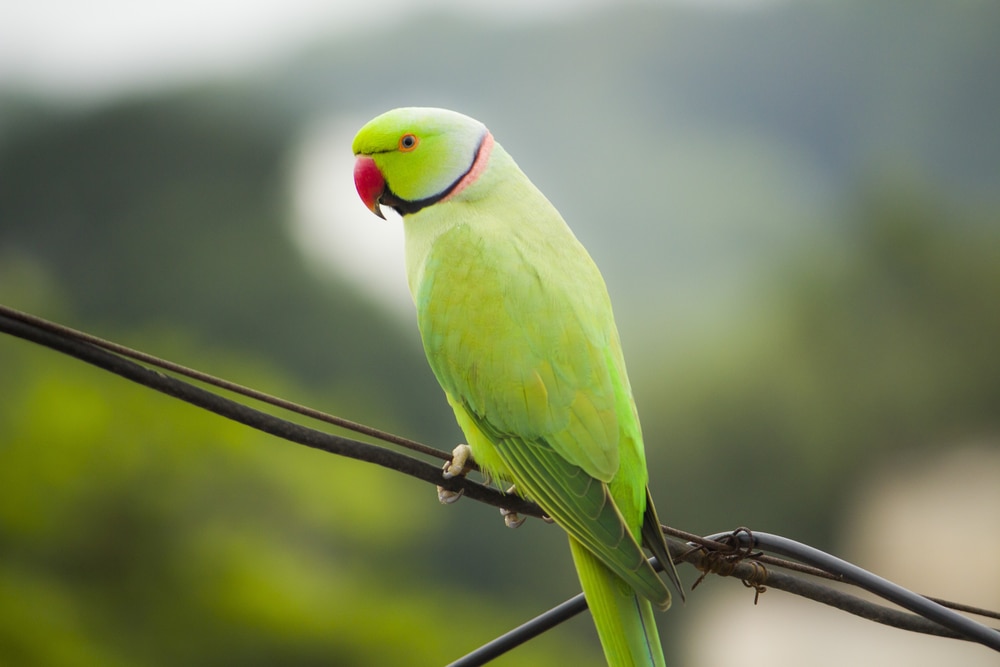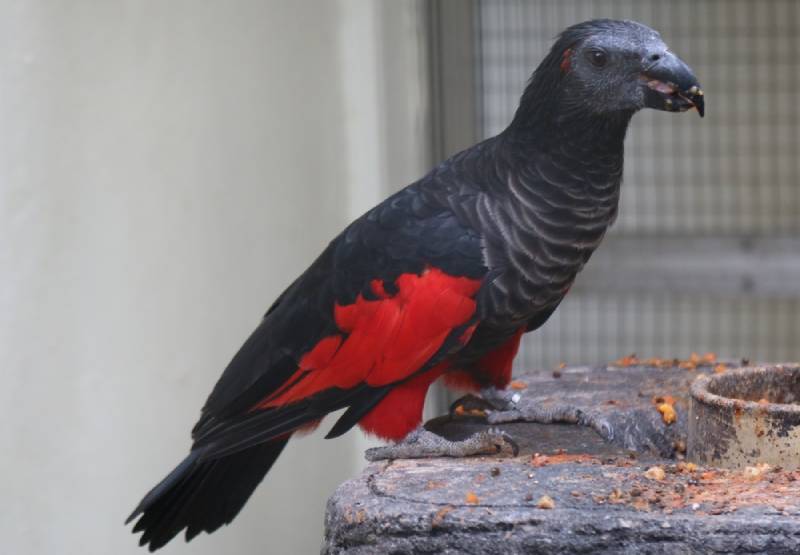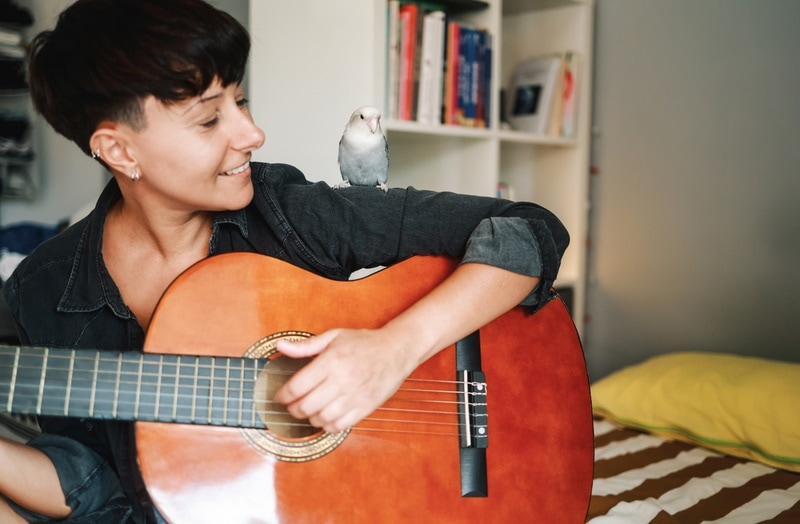How Much Does It Cost to Own an Indian Ringneck Parrot? 2024 Price Guide
Updated on

Click to Skip Ahead
The Indian ringneck parrot, also known as the Indian ringneck parakeet or rose-ringed parakeet, is a highly intelligent and colorful bird that has gained popularity with bird owners in recent years. They have a playful and unique personality and are social birds. These birds are inquisitive and love to exercise their brains. They can also be bold if not kept busy, so keeping enough games, toys, and puzzles for enrichment is essential for these beautiful birds.
These energetic birds have many exceptional attributes, but they do require a little more maintenance and time due to their active personalities. That said, the requirements to keep these birds may be a little more than the average parrot. In this post, we’ll discuss how much it costs to own an Indian ringneck and what you can expect financially to keep them happy, healthy, and entertained.
Bringing Home a New Indian Ringneck Parrot: One-Time Costs
As with any pet, you will have one-time costs before bringing your Indian ringneck home to get your new-feathered friend off to a great start, such as essential supplies and setup. What will follow will be monthly and annual costs to consider. First, we’ll break down the one-time costs to give you an idea regarding the finances you will face.

Free
It’s highly unlikely you’ll find an Indian ringneck for free unless someone gives you the bird. However, certain situations could arise that prevent an owner from no longer caring for the bird, as they have a long lifespan of 25–30 years and could outlive their owner. It is these types of situations where you may find one in an aviary rescue or shelter that needs a loving home, and the price will likely be less than buying from a breeder.
Adoption
- $100–$400
Adoption fees will vary depending on your location. It’s best to acquire your bird through a respectable aviary rescue or shelter to ensure the bird’s health, especially if you’re a new bird owner. When adopting from a rescue or shelter, ask if the bird’s cage is included with the adoption fee, as some rescues and shelters operate that way. Despite being medium-sized birds, they require large cages to maneuver around comfortably due to their long tails, and you may save a little money if the bird already has a cage.
Breeder
- $400–$2,000
Of course, acquiring your Indian ringneck from a breeder will be much more costly than getting the bird from a rescue or similar organization. Prices will vary depending on your location and the color of the bird you’d like to own, as some color choices are more expensive than others. Typically, these birds come in green, yellow, or blue, with blue being the most expensive. You may also need to get on a waiting list if there is a particular color you desire.
Initial Setup and Supplies
- $250–$400
Where you acquire your Indian ringneck will fluctuate the initial setup and supply costs. If you adopt or rescue, many necessities, such as the cage, toys, and food and water bowls, may be included in the adoption fee. Let’s check out the list below of care supplies and costs to give you a ballpark figure of what to expect.
List of Indian Ringneck Parrot Care Supplies and Costs
| Cage | $50–$200 |
| Perches | $7–$15 |
| Toys | $40 |
| Lining | $10 |
| Food | $25 |
| Scrapers/Cage Cleaning Tools | $12 |
| Cage Cleaner | $15 |
| Bird Cage Cover | $25–$50 |
| Food and Water Bowls | $20 |
| Bird Carrier | $50 |
| Bungalow House | $10 |
| First Aid Kit | $25 |
| Initial Vet Visit | $50–$200 |
| Nail Clippers (optional) | $10 |
How Much Does an Indian Ringneck Parrot Cost Per Month?
- $50–$150 per month
Expect to have recurring monthly costs while owning an Indian ringneck. Remember that these birds have a long lifespan of 25–30 years, so it’s best to ensure you’ll be around for the duration of the bird’s lifespan and, of course, have the financial means to take care of your bird’s monthly needs. Let’s have a look.

Health Care
- $0–$65+ per month
Keep in mind that as long as your bird is healthy, you will not incur monthly healthcare costs. As with any pet, accidents, injuries, or illnesses can occur, and you must be prepared should a problem arise. Indian ringnecks are prone to certain common diseases, and taking your bird every 6 months for wellness checkups is advisable.
- Psittacosis
- Polyomavirus
- Aspergillosis
- Depression/feather plucking
- Bacterial infections
Food
- $25–$30 per month
The Indian ringneck will do well on a diet of seeds, pellets, and fresh foods, such as cucumber, squash, grapes, and a variety of other foods. Leafy greens are usually a favorite with these birds, as well as nuts and berries. Over time, you will learn your bird’s favorites so you can keep a supply on hand at all times.
It’s wise to consult your veterinarian on proper nutrition to ensure your bird stays healthy and happy. Ensure any food you give is safe and balanced for birds, and always avoid toxic foods, such as avocado, chocolate, dairy products, onions, garlic, and any foods high in sugar, salt, and fat.
Grooming
- $0–$50 per month
Thankfully, these birds are low maintenance and can groom themselves with ease. However, the nails and beak should be trimmed as needed, but this may not be needed monthly. It’s imperative you take your bird to the vet for a beak trim rather than doing it yourself; vets know the proper methods for doing this safely to avoid injury.
The Indian ringneck does not require baths; however, they can benefit from a misting from time to time to rinse off dirt, dander, and other debris. You can also rinse your bird in the sink for a quick and soothing rinse or even take them into the shower with you. Afterward, place your bird somewhere warm so they can dry themselves. Ensure you do not put them in a cold or drafty room for the drying process.

Medications and Vet Visits
- $15–$40 per month
Indian ringnecks are overall healthy birds, but all birds can develop a sickness or infection. It’s best to take your bird to the vet every 6 months to ensure they’re healthy. Taking your bird every 6 months also helps you stay ahead of the game should an illness arise. It also gives you time to nip the problem in the bud before the issue becomes serious.
Pet Insurance
- $0–$20+ per month
Veterinary bills can be quite expensive, which makes having pet insurance for your bird advisable. Pet insurance can drastically cut down your vet bill, and you can customize your plan to fit your budget. Obtaining pet insurance is not a requirement, but we recommend it because it can really help you financially in the long run.
At the time this article was written, Nationwide was the only pet insurance that covers exotic birds. You do, however, have another option with Pet Assure, a discount veterinary program for exotic pets.
Environment Maintenance
- $10–$30 per month
Environmental enrichment is highly important for the Indian ringneck. Ensure your bird has perches of different varieties and sizes to ensure foot health and toys to keep them entertained. You can add sticks and leaves to the cage to give your bird an outdoor feel, but you’ll still want to place lining on the bottom for easier cleaning. You may consider heating lamps if you live in a cold climate, especially during the winter.
| Perches | $10/month |
| Toys | $10/month |
| Cage lining | $15/month |
| Cleaning supplies | $15/month |
Entertainment
- $5–$20 per month
Indian ringnecks are brilliant, curious birds that need constant stimulation. With that said, prepare to invest in plenty of toys and perches to keep your bird entertained. Depression is a potential problem for these birds if they don’t get enough enrichment, which could lead to feather plucking and other health issues.
Remember, though, that you can provide your bird with objects to play with to keep them engaged that you probably already have in the home. For example, hang food from the top of the cage to simulate foraging. They also love to play with paper plates, pine cones (sterilize them first), coffee filters, cardboard, cardboard drink carriers, paper towels, straws, and bottle caps, to name a few.
Total Monthly Cost of Owning an Indian Ringneck Parrot
- $50–$150 per month
The total monthly cost of owning an Indian ringneck parrot will vary depending on your location, your bird’s overall health, and your ability to keep them entertained using safe, household items for enrichment, as well as store-bought toys. While you can easily provide homemade items for play, we don’t recommend cutting the cost of your bird’s nutrition. Ensure you feed quality parrot food that provides essential nutrients, as keeping your bird healthy starts there.

Additional Costs to Factor In
Unexpected and additional costs can always weave their way in, and being prepared can relieve headaches and financial burdens down the road. These birds love to explore outside their cage, and there’s a chance your bird may destroy something in your home, such as a chair or kitchenware that needs replacing.
If you’re planning a vacation, you’ll need an available pet sitter your bird knows and trusts. You’ll need to hire a pet sitter if you have no one that fits that bill. It’s best to have the pet sitter interact with your bird a few days prior to your departure so that your bird is comfortable with the sitter. In some cases (and depending on your location), you may find a pet bird boarding facility to take care of your bird while you’re away.
Owning an Indian Ringneck on a Budget
It’s possible to own an Indian ringneck on a budget. The only areas you should not cut expenses are food and veterinary care. As far as toys, you can make toys for your bird for next to nothing using items you already have lying around.
Purchasing the bird and your initial costs for setup and supplies will be the biggest expense you’ll face (unless your bird gets sick or injured). After that, monthly costs are not too terrible.
Saving Money on Indian Ringneck Care
Remember that you can make homemade toys for a more budget-friendly option. Birds love to destroy things, and if you prefer to buy all your bird’s toys, that will add up. However, it’s crucial to ensure any DIY homemade toys you provide are safe for your bird. Avoid leather with chemicals and dyes, nylon rope, chains, and treated wood for making toys. If ever in doubt, consult your veterinarian for safe suggestions to make your own bird toys.
One way to save on store-bought toys is to become a member of your local pet store. Becoming a member has advantages, such as discounts on toys and food, which will come in handy. Also, watch for coupons and deals on toys, food, etc.
Another wise step is to limit your bird’s access in certain areas of the home outside of the cage. For example, if you have an expensive leather sofa, don’t allow your bird to roam in that room.
Conclusion
Indian ringneck parrots are fascinating birds with high intelligence. This bird will require much of your time, but they are fun to have around. They are relatively low maintenance, but you will spend roughly $25–$30 on bird food. Remember that you can make your own toys to help cut costs. Ensure you have the time to devote to this bird daily, as they need daily enrichment. Don’t forget to provide fresh water daily, preferably filtered water.
We hope this guide gives you an idea of what finances you will face owning this bird, and we wish you much happiness with your new feathered friend!
Featured Image Credit: B Prashanth Goud, Shutterstock












